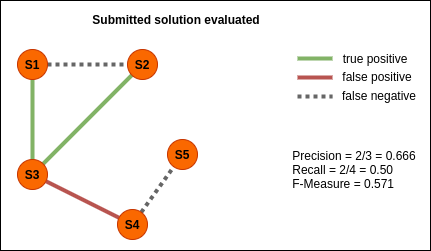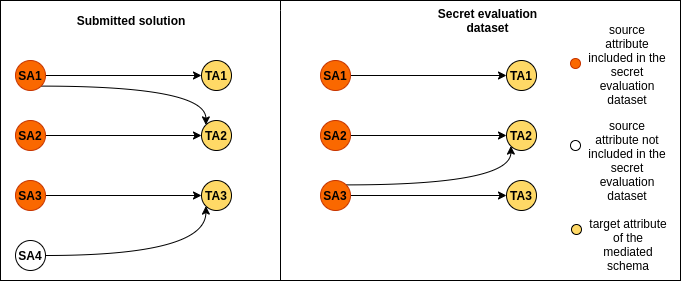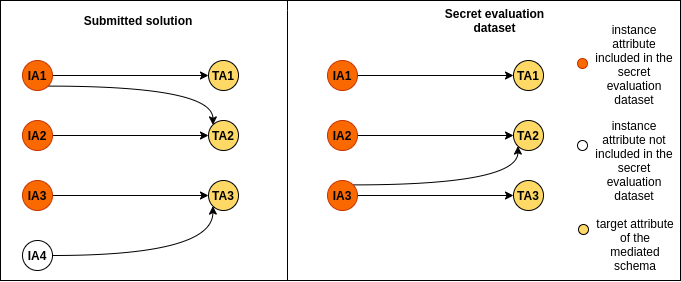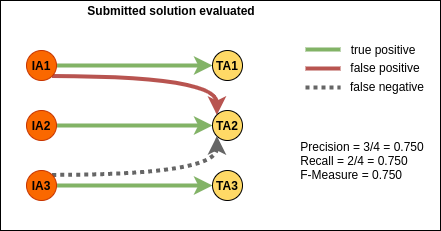| W1_6 |
08:00-08:15 |
recorded + live QA |
Intermediate Training of BERT for Product Matching |
Ralph Peeters (University of Mannheim), Christian Bizer (University of Mannheim) and Goran Glavaš (University of Mannheim) |
| W1_6 |
08:15-08:30 |
recorded + live QA |
Fast Entity Resolution With Mock Labels and Sorted Integer Sets |
Mark Blacher (Friedrich Schiller University Jena), Joachim Giesen (Friedrich Schiller University Jena), Sören Laue (Friedrich Schiller University Jena), Julien Klaus (Friedrich Schiller University Jena) and Matthias Mitterreiter (Friedrich Schiller University Jena) |
| W1_6 |
08:30-09:00 |
recorded + without live QA |
Bringing Data Exchange to Knowledge Bases |
Renée Miller (Northeastern University) |
| W1_6 |
09:00-09:15 |
recorded + live QA |
Entity Resolution on Camera Records without Machine Learning |
Luca Zecchini (Università degli Studi di Modena e Reggio Emilia), Giovanni Simonini (Università degli Studi di Modena e Reggio Emilia) and Sonia Bergamaschi (Università degli Studi di Modena e Reggio Emilia) |
| W1_6 |
09:15-09:30 |
recorded + live QA |
CheetahER: A Fast Entity Resolution System for Heterogeneous Camera Data |
Nan Deng (Southern University of Science and Technology), Wendi Luan (Southern University of Science and Technology), Haotian Liu (Southern University of Science and Technology) and Bo Tang (Southern University of Science and Technology) |
| W1_6 |
09:30-10:00 |
recorded + without live QA |
Knowledge-graph aware language models |
William W. Cohen (Google) |
| W1_6 |
10:00-10:15 |
recorded + live QA |
An Extensible Block Scheme-Based Method for Entity Matching |
Jiawei Wang (Jinan University), Haizhou Ye (Jinan University) and Jianhui Huang (Jinan University) |
| W1_6 |
10:15-10:30 |
recorded + live QA |
Spread the good around! Information Propagation in Schema Matching and Entity Resolution for Heterogeneous Data |
Gabriel Campero Durand (University of Magdeburg), Anshu Daur (University of Magdeburg), Vinayak Kumar (University of Magdeburg), Shivalika Suman (University of Magdeburg), Altaf Mohammed Aftab (University of Magdeburg), Sajad Karim (University of Magdeburg), Prafulla Diwesh (University of Magdeburg), Chinmaya Hegde (University of Magdeburg), Disha Setlur (University of Magdeburg), Syed Md Ismail (University of Magdeburg), David Broneske (University of Magdeburg) and Gunter Saake (University of Magdeburg) |
| W1_6 |
10:30-11:00 |
recorded + without live QA |
The Diffbot Knowledge Graph |
Mike Tung (Diffbot) |
| W1_6 |
11:00-12:00 |
live streaming + live QA |
Student Panel: Towards the next generation of benchmarks for Data Integration and Knowlegde Graph construction
Moderator: Donatella Firmani |
Bahar Ghadiri Bashardoost (University of Toronto), Riccardo Cappuzzo (EURECOM), Daniel Obraczka (University of Leipzig) |
| BREAK |
| W2_6 |
15:00-15:40 |
live streaming + live QA |
Bringing Data Exchange to Knowledge Bases |
Renée Miller (Northeastern University) |
| W2_6 |
15:40-15:50 |
recorded + without live QA |
Intermediate Training of BERT for Product Matching |
Ralph Peeters (University of Mannheim), Christian Bizer (University of Mannheim) and Goran Glavaš (University of Mannheim) |
| W2_6 |
15:50-16:00 |
recorded + without live QA |
Fast Entity Resolution With Mock Labels and Sorted Integer Sets |
Mark Blacher (Friedrich Schiller University Jena), Joachim Giesen (Friedrich Schiller University Jena), Sören Laue (Friedrich Schiller University Jena), Julien Klaus (Friedrich Schiller University Jena) and Matthias Mitterreiter (Friedrich Schiller University Jena) |
| W2_6 |
16:00-16:40 |
recorded + live QA |
Knowledge-graph aware language models |
William W. Cohen (Google) |
| W2_6 |
16:40-16:50 |
recorded + without live QA |
Entity Resolution on Camera Records without Machine Learning |
Luca Zecchini (Università degli Studi di Modena e Reggio Emilia), Giovanni Simonini (Università degli Studi di Modena e Reggio Emilia) and Sonia Bergamaschi (Università degli Studi di Modena e Reggio Emilia) |
| W2_6 |
16:50-17:00 |
recorded + without live QA |
CheetahER: A Fast Entity Resolution System for Heterogeneous Camera Data |
Nan Deng (Southern University of Science and Technology), Wendi Luan (Southern University of Science and Technology), Haotian Liu (Southern University of Science and Technology) and Bo Tang (Southern University of Science and Technology) |
| W2_6 |
17:00-17:40 |
recorded + live QA |
The Diffbot Knowledge Graph |
Mike Tung (Diffbot) |
| W2_6 |
17:40-17:50 |
recorded + without live QA |
An Extensible Block Scheme-Based Method for Entity Matching |
Jiawei Wang (Jinan University), Haizhou Ye (Jinan University) and Jianhui Huang (Jinan University) |
| W2_6 |
17:50-18:00 |
recorded + without live QA |
Spread the good around! Information Propagation in Schema Matching and Entity Resolution for Heterogeneous Data |
Gabriel Campero Durand (University of Magdeburg), Anshu Daur (University of Magdeburg), Vinayak Kumar (University of Magdeburg), Shivalika Suman (University of Magdeburg), Altaf Mohammed Aftab (University of Magdeburg), Sajad Karim (University of Magdeburg), Prafulla Diwesh (University of Magdeburg), Chinmaya Hegde (University of Magdeburg), Disha Setlur (University of Magdeburg), Syed Md Ismail (University of Magdeburg), David Broneske (University of Magdeburg) and Gunter Saake (University of Magdeburg) |
| W2_6 |
18:00-19:00 |
recorded + without live QA |
Student Panel: Towards the next generation of benchmarks for Data Integration and Knowlegde Graph construction
Moderator: Donatella Firmani |
Bahar Ghadiri Bashardoost (University of Toronto), Riccardo Cappuzzo (EURECOM), Daniel Obraczka (University of Leipzig) |







